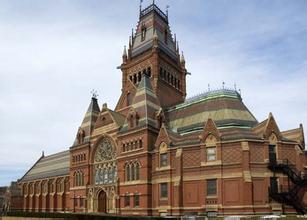Education spending in the United States differs from school to school.
美国各学校之间的教育拨款是有差异的。
In the southern state of Mississippi, a school in Brookhaven spends $6,417 per student. Just 100 kilometers west, Natchez spends nearly $3,000 more.
密西西比州布鲁克海文位于美国南方,该地一所学校每名学生获得的拨款为6417美元。而在该地以西仅100公里外的纳齐兹,这个数字多出了3000美元。
Shannon Eubanks is a school principal, or head of school, in Brookhaven, Mississippi.He told VOA "Our kids don't have a chance."
香农·尤班克斯是密西西比州布鲁克海文的一位学校校长,他在接受"美国之声"采访时说,"我们的孩子没有机会。"
Less money means students in Brookhaven don't have a music or arts teacher, Eubanks said.Students must share computers and they ride old buses that should have been removed from service years ago.
尤班克斯说,拨款比别的地方少,这意味着布鲁克海文这个地方的学生没有音乐或美术老师。学生们被迫几人共用一台电脑,坐着几年前就该报废的破旧校车。
Eubanks worked hard on a proposal last year to increase money for every Mississippi public school.But Mississippi voters defeated it.
尤班克斯去年努力推进一项提案,为密西西比州的公立学校多争取一些拨款。但是密西西比州的选民没有让这项提案通过。
"We just have to keep trying," Eubanks said.
"我们只能继续努力。"尤班克斯说。

For six months, National Public Radio (NPR) worked on a detailed report about what it calls education's "money problem."
美国国家公共广播电台(NPR)利用六个月时间完成了一份详尽的调查报告,该电台称其为教育的"钱荒"。
It reported that even school districts located near each other get very different amounts of money.
该报告称,即使学区距离很近,拨款上也会有很大差别。
The reason is that districts get money from a number of places, NPR explained.All states give money for schools, but some states give more than others.
NPR解释说,造成这种差异的原因是拨款有很多来源。所有州都为学校拨款,但是有的州拨款不均。
Some states give more money to poor school districts than rich districts.The idea is that poorer districts need more help than richer districts.But other states give out money equally to rich and poor districts.
有的州拨给贫穷学区的钱比富裕学区多。这是出于前者比后者更需要帮助的考虑。但是有的州给两者同等的拨款。
The federal government has programs to help poor districts, but the effect is limited.The federal government only pays for about 8 percent of Kindergarten through 12th grade public school costs.
联邦政府有帮助贫穷学区的项目,但是收效甚微。在从幼儿园到12年级公立学校的开支中,联邦政府只负责其中8%的费用。
The largest share comes from local taxes on property.Communities with lots of wealthy people collect more property taxes and, as a result, have more money to spend on schools.The opposite is the case for poor communities.
最大的一部分来自于地方的财产税。富人多的地方,财产税收得也多,所以,他们就有更多给学校的拨款。而在比较贫穷的地方,情况就反过来了。
The U.S. Census Bureau reported last year on school spending for the largest U.S. school districts.
美国人口调查局报告了去年美国几个最大学区的学校拨款。
In the largest school district, New York City, per student spending is $20,331, the Census Bureau said.That is nearly twice as much as in Los Angeles, California.
人口调查局的报告称,最大的学区——纽约市平均每个学生的拨款是20331美元。这几乎是加利福尼亚州洛杉矶市的两倍。
In Chicago, Illinois, it is $12,284 per student, $8,725 in Miami, Florida, and $8,295 in Houston, Texas.
这个数字在伊利诺伊州芝加哥是平均每名学生12284美元,在佛罗里达州迈阿密是8725美元,在德克萨斯州休斯顿是8295美元。
Education Week also researched funding levels for all 50 U.S. states.The differences are large.
《教育周刊》也对美国50个州的教育拨款水平做了调查。结果发现差异是很大的。
On average, New York, Alaska, and Wyoming spent more than $17,000 per student in 2013,
据《教育周刊》报道,平均来说,纽约州、阿拉斯加州和怀俄明州2013年平均每名学生得到拨款17000美元,
while California, Oklahoma and Nevada spent about half that amount, Education Week reported.The average for the U.S. as a whole is about $12,000 per student.
而加利福尼亚州、俄克拉荷马州和内华达州只有这个数字的一半。美国整体上的教育拨款大概是平均每名学生12000美元。
Here is how the small state of Wyoming came to be on the high end of school spending:
像怀俄明这样的小州,是这样做到在教育拨款上很多的:
The state receives taxes from oil and coal production.In the past, the extra money helped communities with the most production.
该州向石油和煤炭生产征税。在过去,多出来的钱总是拨给出产最多的地方。
That changed in the 1990s, when courts ruled all school districts in Wyoming should share in the oil and coal taxes.
这种情况在20世纪90年代发生了改变,法庭裁定怀俄明州所有学区都应该分享石油和煤炭的税款。
It led to increased money for all Wyoming public schools, said Kari Eakins of Wyoming Department of Education.The biggest change was reducing class size in early gradesThe state now requires no more than 16 students per teacher in grades kindergarten through 3rd grade.
怀俄明州教育部的卡里·埃金斯说,这使得怀俄明州所有公立学校的拨款都上升了。最大的改变就是减小低年级的班型。现在该州规定,三年级以下每班不得超过16名学生。
The Center on Budget and Policy Priorities looks at public spending on services such as education.
美国预算与政策优先中心关注像教育这样的公共服务拨款。
It said the big U.S. recession in 2008 led states to lower spending on education.Falling house prices meant property taxes, which provide the majority of school funding, dropped, too.
该中心称,美国2008年的经济萧条导致各州降低了教育方面的拨款。房价降低,意味着教育拨款的最大来源——财产税也减少了。
The recession is over, but funding for schools remains below 2008 levels in most states, the center said.
该中心称,虽然经济萧条结束了,但是大部分州的教育拨款还保持着2008年的低水平。
The center said those cuts mean schools will produce fewer "qualified workers" to fill the growing demand for "well educated" workers.
该中心称,拨款的削减意味着学校培养的"合格工人"越来越少,无法满足对"受过良好教育的工人"越来越大的需求。
How much money a school gets matters, said Eubanks, the Mississippi principal.His school serves 840 students in a rural community -- from kindergarten through 12th grade.
那位来自密西西比州的学校校长尤班克斯说,学校能拨到多少钱是很重要的。他的学校服务于农村地区的840名学生,这些学生从幼儿园到12年级都有。
Eubanks said, "We have a lot of issues well beyond education problems trying to serve poor students in a poor state."He added the school is not giving them services "available in districts with more money."
尤班克斯说,"要帮助贫困州的贫穷学生,除了教育我们还面临很多很多问题。"他补充说,学校没法给他们"跟有钱的州"一样的服务。
本栏目视频字幕与文本并不完全对应,且视频播放缓冲时间较长,敬请谅解!


